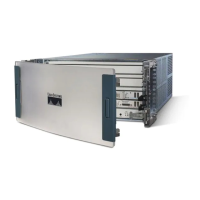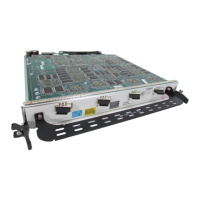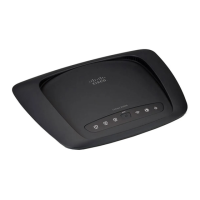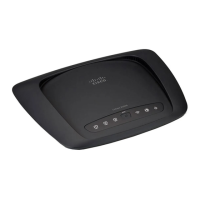Implementing Multicast Routing on Cisco IOS XR Software Cisco ASR 9000 Series Routers
How to Implement Multicast Routing
MCC-53
Multicast Configuration Guide
OL-
• Enabling a VPN for Multicast Routing, page MCC-41 (required)
• “Configuring a Routing Policy” (required only if performing the following task)
For information, see Cisco IOS XR Routing Configuration Guide.
• “Configuring an RPF Topology in PIM” section on page MCC-51 (optional)
For more information about MVPN extranet routing, see MVPN IPv4 and IPv6 Connectivity,
page MCC-15. For examples of an end-to-end configuration of each of the two available MVPN extranet
topology solutions, see Configuring MVPN Extranet Routing: Example, page MCC-91.
Prerequisites for MVPN Extranet Routing
• PIM-SM and PIM-SSM are supported. You must configure the multicast group range in the source
and receiver VRFs with a matching PIM mode.
• Because only static RP configuration is currently supported, both source and receiver MVRFs must
be configured with same RP for a given multicast group range.
• In the MVPN IPv4 and IPv6 Connectivity, page MCC-15 topology model, the data MDT
encapsulation range should be big enough to accomodate extranet streams without any aggregation.
This prevents extranet traffic flowing to multiple VRFs from being carried into only one data MDT.
• Data MDT configuration is required only on the Source VRF and Source PE Router.
Restrictions for MVPN Extranet Routing
• Supported only on the Cisco XR 12000 Series Router.
• PIM-DM and PIM-BIDIR are not supported.
• Cisco IOS XR software supports only IPv4 extranet multicast routing over IPv4 core multicast
routing.
• Any PE can be configured as an RP except a PE in the “Receiver VRF on the Source PE Router”
model where the extranet switchover is occurring and where the source VRF has no interfaces. This
is because the source VRF must have some physical interface to signal the data packets being
received from the first hop.
• Cisco IOS XR currently supports only one encapsulation of VRF traffic on an extranet switchover,
meaning that only one encapsulation interface (or MDT) is allowed in the outgoing forwarding
interface list of the multicast route. This means that if there are multiple receiver VRFs joining same
source VRF for a given stream, only the first receiver VRF receives traffic; other receiver VRF joins
are discarded.
Note This limitation applies only to the topology model MVPN IPv4 and IPv6 Connectivity,
page MCC-15.
Configuring VPN Route Targets
The following procedure demonstrates how to configure a VPN route target for each topology.
Note Route targets should be configured in such a way that the receiver VRF has unicast reachabilty to
prefixes in the source VRF. These configuration steps can be skipped if prefixes in the source VRF are
already imported to the receiver VRF.

